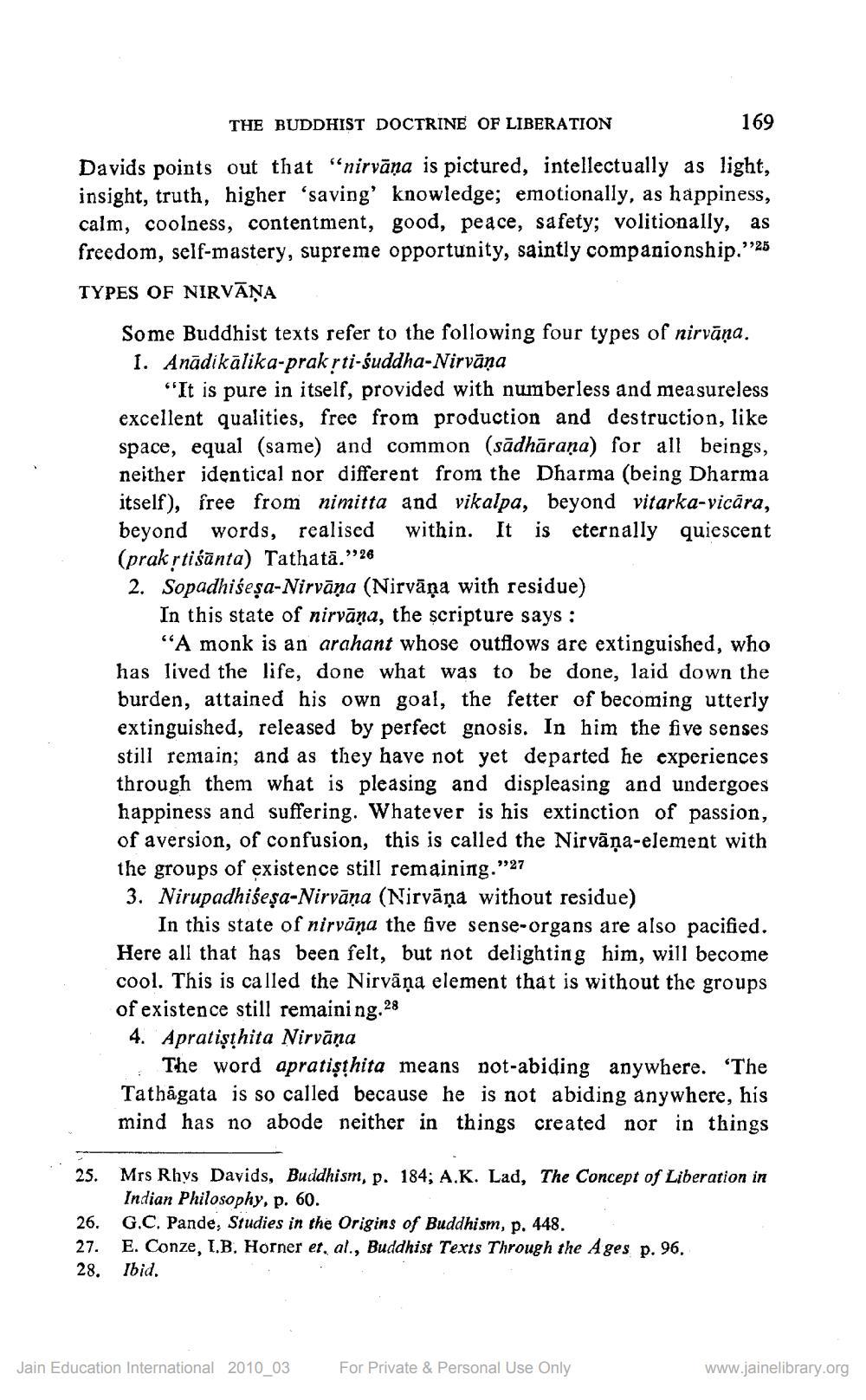________________
THE BUDDHIST DOCTRINE OF LIBERATION
Davids points out that "nirvana is pictured, intellectually as light, insight, truth, higher 'saving' knowledge; emotionally, as happiness, calm, coolness, contentment, good, peace, safety; volitionally, as freedom, self-mastery, supreme opportunity, saintly companionship."" TYPES OF NIRVĀŅA
25
25.
26.
27.
28.
169
Some Buddhist texts refer to the following four types of nirvāṇa. 1. Anadikalika-prakṛti-suddha-Nirvaṇa
"It is pure in itself, provided with numberless and measureless excellent qualities, free from production and destruction, like space, equal (same) and common (sādhāraṇa) for all beings, neither identical nor different from the Dharma (being Dharma itself), free from nimitta and vikalpa, beyond vitarka-vicāra, beyond words, realised within. It is eternally quiescent (prakṛtisanta) Tathata."26
2. Sopadhiseșa-Nirvāṇa (Nirvāņa with residue)
In this state of nirvana, the scripture says:
"A monk is an arahant whose outflows are extinguished, who has lived the life, done what was to be done, laid down the burden, attained his own goal, the fetter of becoming utterly extinguished, released by perfect gnosis. In him the five senses still remain; and as they have not yet departed he experiences through them what is pleasing and displeasing and undergoes happiness and suffering. Whatever is his extinction of passion, of aversion, of confusion, this is called the Nirvaṇa-element with the groups of existence still remaining."27
3. Nirupadhiseṣa-Nirvāṇa (Nirvāņa without residue)
In this state of nirvana the five sense-organs are also pacified. Here all that has been felt, but not delighting him, will become cool. This is called the Nirvāņa element that is without the groups of existence still remaining.28
4. Apratisthita Nirvāņa
The word apratisthita means not-abiding anywhere. 'The Tathāgata is so called because he is not abiding anywhere, his mind has no abode neither in things created nor in things
Mrs Rhys Davids, Buddhism, p. 184; A.K. Lad, The Concept of Liberation in Indian Philosophy, p. 60.
G.C. Pande, Studies in the Origins of Buddhism, p. 448.
E. Conze, I.B. Horner et. al., Buddhist Texts Through the Ages p. 96. Ibid.
Jain Education International 2010_03
For Private & Personal Use Only
www.jainelibrary.org




